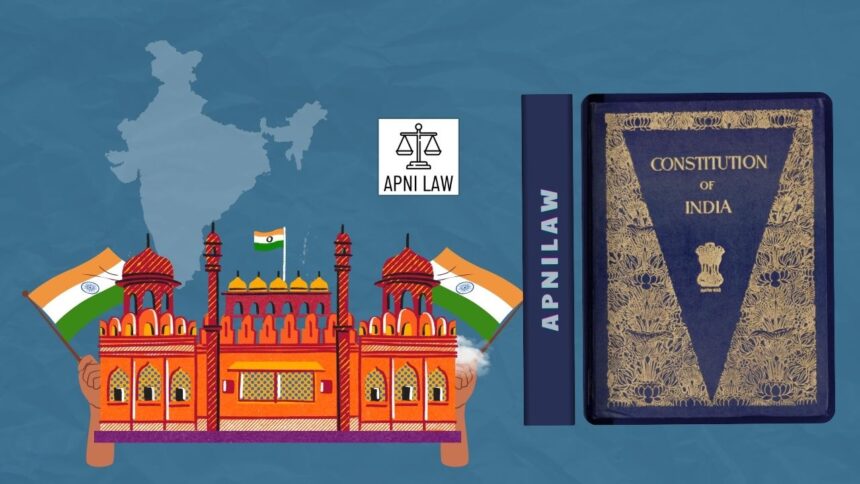Introduction
The LIC Case of 1995 is one of the most important rulings in Indian constitutional history. Earlier cases like Berubari (1960) and Kesavananda Bharati (1973) had debated whether the Preamble was symbolic or legally valid. The Supreme Court in the LIC Case went further. It held that the Preamble is not just a decorative introduction but an essential and binding part of the Constitution. This ruling made the Preamble a central guide in interpreting constitutional provisions and laws.
The case marked a turning point. It confirmed that the ideals of justice, liberty, equality, and fraternity are not optional. They are binding values that guide the entire constitutional system.
Background of the LIC Case
The case arose from challenges related to the Life Insurance Corporation of India (LIC). Petitioners questioned whether certain provisions linked to LIC went against constitutional values. To decide the issue, the Court had to answer a broader question: does the Preamble carry legal force or is it only aspirational?
This debate was not new. In Berubari (1960), the Court had said the Preamble was not part of the Constitution. Later, in Kesavananda Bharati (1973), the Court reversed that view and ruled that the Preamble is indeed part of the Constitution. However, it could only be amended without harming the basic structure. By 1995, the Court had to go a step further and decide whether the Preamble had binding power in law.
Supreme Court’s Observations in the LIC Case
The Supreme Court in 1995 made a clear declaration: the Preamble is an integral and binding part of the Constitution. The judges explained that while the Preamble does not create direct, enforceable rights, it acts as a compass for interpretation.
The Court noted that every Article and every law must be read in harmony with the Preamble. If a law contradicts the ideals of the Preamble, such as justice or equality, then courts must question its validity. This reasoning strengthened the role of the Preamble in Indian law.
Why the Preamble Matters After LIC
The LIC judgment made the Preamble the foundation of constitutional interpretation. The Court stressed that the principles in the Preamble—justice, liberty, equality, and fraternity—represent the spirit of the Constitution. These values must guide judges, lawmakers, and even administrators when applying the law.
For example, the Court often relies on social justice and equality to expand the meaning of Articles 14, 19, and 21. The idea of fraternity influences judgments that promote unity and equal treatment. The LIC Case confirmed that these uses of the Preamble are not optional. They are binding and must shape the way India interprets its Constitution.
Significance of the LIC Case
The ruling in the LIC Case carried lasting effects. It confirmed that the Preamble is not only part of the Constitution but also a binding guide in interpreting it. This ruling made it clear that no court or government can ignore the Preamble when applying constitutional principles.
The decision also tied the Preamble closely to the basic structure doctrine. If the Preamble expresses the essence of the Constitution, then those ideals—justice, liberty, equality, fraternity, sovereignty, secularism, and democracy—are part of the basic structure that cannot be destroyed by amendments. This gave constitutional stability and preserved democratic governance.
Criticism and Debate
The judgment also sparked debate. Some critics argued that giving the Preamble binding force gave too much power to judges. Since the Preamble uses broad language, courts might interpret it too widely. Others, however, welcomed the ruling. They saw it as necessary to protect India’s democratic values from misuse of power by political majorities.
Despite criticism, the LIC Case has stood strong over the years. Courts continue to cite it to expand and protect constitutional ideals.
Legacy of the LIC Case
The LIC Case (1995) transformed the status of the Preamble. From being seen as only aspirational, the Preamble became a binding part of the Constitution. Courts now use it regularly to interpret rights, duties, and government policies.
This judgment gave India’s constitutional philosophy a solid foundation. It made sure that no matter how laws evolve, the vision of justice, liberty, equality, and fraternity will always remain central. Today, the LIC Case is still seen as a reminder that the Constitution is not just about legal text but about values that guide a nation.
For any specific query call at +91 – 8569843472
Conclusion
The LIC Case (1995) was a landmark step in India’s constitutional journey. The Supreme Court ruled that the Preamble is binding in nature and not merely symbolic. This ruling strengthened the ideals of justice, liberty, equality, and fraternity, making them permanent features of India’s democracy.
By giving binding force to the Preamble, the Court ensured that the Constitution will always reflect its core vision. Governments may change, and laws may evolve, but the soul of the Constitution expressed in the Preamble, will remain untouchable.








